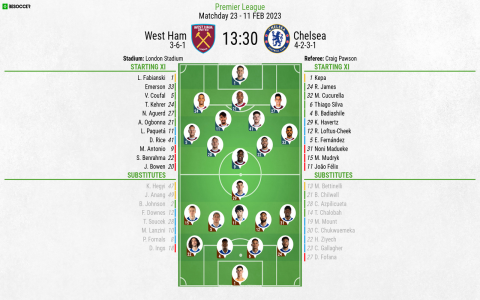Yesterday, a friend sent me a message asking, “When was the first goal scored in the Chelsea vs. West Ham match?” I thought it would be easy, just open a web page and look it up. As a result, I searched for a long time, but all I saw was a bunch of news articles or previews for the next match. I couldn’t find a timeline that recorded what happened minute by minute.That’s when I realized that looking up such details wasn’t so easy.
Like most people, I went straight to Google and searched for “Chelsea vs West Ham timeline.” The results were all match summaries, post-match comments, or predictions from betting sites. I clicked through them all, but couldn’t find a single decent timeline.
Some articles said, “A goal was scored shortly after the start of the second half,” but how long is “shortly”? Such vague descriptions were of no help at all.

I went to several popular soccer websites, such as ESPN, BBC Sport, and Sofascore. After finding the match page, I found the score and lineup, but it took a long time to find the specific times of events.
Some websites hide the timeline under a tab labeled “Match Updates” or “Live Text,” which opens a long scrollable text where you have to read line by line. Even more frustratingly, some websites require you to manually click on each event to see the time, which is a huge waste of time.
Later, I realized that the data on these websites didn’t come out of thin air, but must be provided directly by a back-end interface. So I tried a technical method, but it wasn’t difficult to do.
After opening the match page, I right-clicked on the page, selected “Inspect,” and then switched to the “Network” tab. Then I refreshed the page to see which files were loading.
Among the jumble of gibberish, I looked for files with names containing “event,” “timeline,” or “matchData.” I clicked on one of them, then clicked “Preview,” and was surprised to see a clear list of all the major events of the match:
- 23rd minute: Goal, with the player’s name
- 37th minute: Yellow card, who got it
- 65th minute: Substitution, who came on and who went off
- Plus the times of corner kicks, shots on goal, and fouls
It’s all plain text, with no ads or extra content.
You may think that “checking the page” is too technical, something only programmers would do. But in fact, as long as you know how to right-click, you can try it. I taught my friend how to do it twice, and now he can find it himself.
Moreover, this method is not only applicable to this game, but to any game as long as the data is available on these major websites.
I later realized that these websites intentionally hide simple information to attract traffic. They want you to view more ads and click on more pages, rather than seeing all the data at a glance.
So the “text broadcast” you see is actually packaged, and the real clean data is in the background, which most people don’t know how to access.
I’ve summarized a process for those who want to check the timeline:
- Open the match page of a major soccer website.
- Right-click on an empty area of the page and select “Inspect.”
- Click the “Network” tab and refresh the page.
- In the list, find files starting with ‘event’ or “timeline.”
- Click on it, view the “Preview,” and you’ll see the complete timeline.
The entire process takes just two minutes.
Many people rely on post-match articles to understand the game, but the author may have remembered the time incorrectly. For example, they may write that a goal was scored in the 30th minute as “mid-first half,” which is actually several minutes off.
The original data file is automatically generated by the system and is accurate to the second, so there are no errors.
In addition to goals, this method also allows you to see:
- Which player was substituted in which minute
- Who received a yellow card and whether there were any two yellow cards resulting in a red card
- Which corner kicks led to scoring opportunities
These details are particularly useful for analyzing matches.
If you don’t want to learn how to “check the page,” there are simpler methods:
- Use apps like Sofascore or Flashscore, which have clearer timelines.
- Open two pages while watching the game, one for the live broadcast and one for the real-time data.
- To check historical games, go to the UEFA or Premier League official websites for official records.
Although it’s not as fast as digging up the data directly, it can still meet most needs.
Checking the match timeline has taught me: There’s a lot of information online, but the truly useful data is often buried deep.
Not everything is displayed on the homepage; you have to know where to look.
Now when my friends ask me, “When was the goal scored?” I can answer in five seconds.
This feeling is way better than just flipping through news articles.

